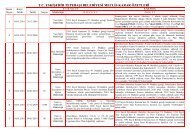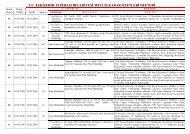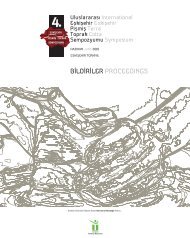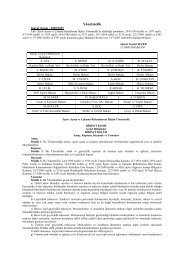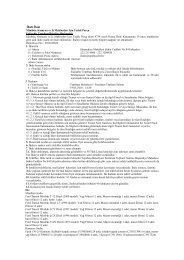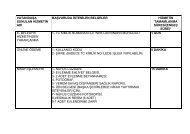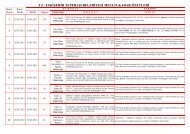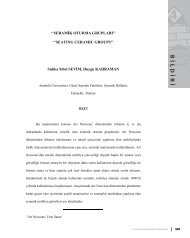Bildiri Kitabı - Kitap3
Bildiri Kitabı - Kitap3
Bildiri Kitabı - Kitap3
Create successful ePaper yourself
Turn your PDF publications into a flip-book with our unique Google optimized e-Paper software.
Finally, it examines brick form in Frank Lloyd Wright’s architecture as part of<br />
the tradition of the masonry, part of the Modern Architecture and part of the<br />
abstract Froebel training.<br />
2. FROEBEL’S GIFTS: THE KINDERGARTEN METHOD<br />
The idea of kindergarten “garden of children” as a locus of human education<br />
was developed by a German educator and a crystallographer Friedrich Froebel<br />
(1782-1852) around the early 1800s. Froebel’s teaching is based on natural law.<br />
It is based on the idea that a child’s activities should not be left vague and<br />
purposeless. How the child exercises its sense of touch by grasping things, how<br />
it watches, and listens should be directed under the aid of an educator. (Bates,<br />
2009, 2-3) As argued by Harris,<br />
Froebel has investigated the relation of child ‘s activities in play<br />
to the growth of his mind… in play the child ascertains what he<br />
can do, and discovers his possibilities of will and thought by<br />
exerting his power spontaneously. In work he follows a task<br />
prescribed for him by another, and does not reveal his own<br />
proclivities and inclinations, but another’s. in play he reveals his<br />
own original power…[In such a system] the pupil unfolds his<br />
will-power quite as much as his sense perception, and by this<br />
arrives in the surest way a thinking reason, which is the<br />
culmination of self-activity (Harris, 1970 vi.)<br />
Froebel’s pupils are nurtured by the kindergartners “gardeners of children”<br />
whose role is to “promote natural development with the help of the gifts rather<br />
than to force growth by injecting or grafting information” (Rubin, 1989, 25.) In<br />
his article “Kindergarten Grammars: Designing with Froebel’s Building Gifts,”<br />
George Stiny points out that “in the kindergarten, the child plays with one or<br />
another gifts to discover its properties and possibilities for design. When the<br />
child reaches an impasse, kindergartners suggest a new avenue or direction of<br />
play. The child is thus encouraged to think about certain kinds of designs that<br />
can be made with the gifts (Stiny, 1980, 409.) Unlike we use today,<br />
kindergartens were not limited in the preschool education. As pointed out by<br />
Jeanne Rubin “they provided training through different age levels; virtually all<br />
formal kindergartens dispensed training through the age of seven-and-a-half,<br />
many through the age of ten, some to the university level” (Rubin, 1989,25.)<br />
The goal of the kindergarten method was to “stir up, to awaken, and to<br />
strengthen, the pleasure and power of the human being to labour<br />
uninterruptedly at his own education.” (Froebel, 2009, 11) Froebel states that<br />
<br />
3 <br />
4. ULUSLARARASI ESKİŞEHİR PİŞMİŞ TOPRAK SEMPOZYUMU 439





